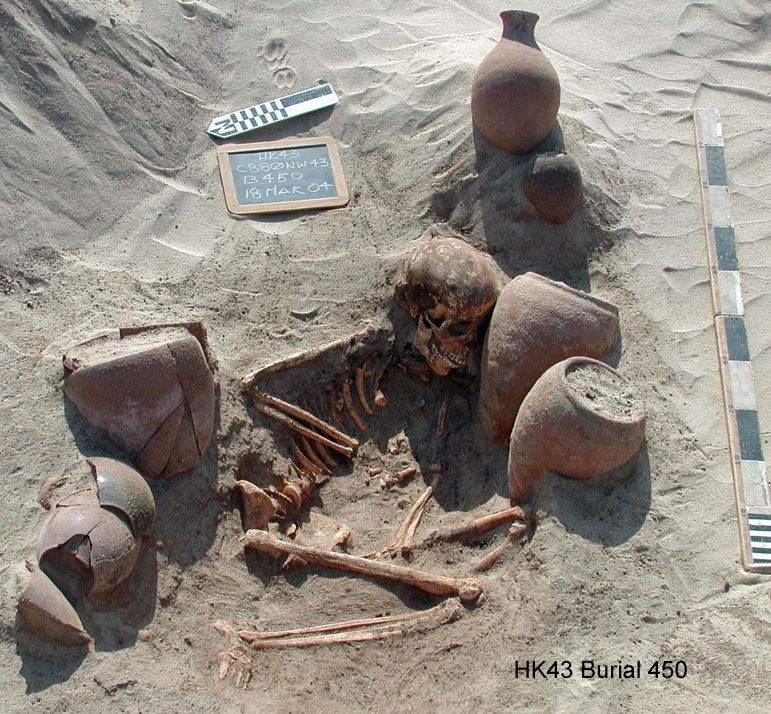Hierakonpolis
- Period: Pre-dynastic
- Location: Egypt
- Burials: 542 individuals (196 studied)
- Archaeologists: T. Gamza, & J. Irish
- Related Keyword/Categories: Paleopathology, Diet, Inhumation, Identity

The sample comes from Hierakonpolis, which is located on the west bank of the Nile in southern Upper Egypt. The archaeozoological evidence includes animal remains of sacrifices from elite tombs of this period. The fauna primarily include domesticates like cattle, sheep and goat. This suggests that they were the primary sources of meat, as well as some dairy. There was also a high number of fish remains found. Archaeobotanical remains from preserved stomachs and baskets of offerings includes emmer wheat, barley, acacia berries and melon. Archaeological records and tools confirm that bread and beer were also part of the diet. The skeletal remains were taken from a Predynastic working class cemetery. Of 452 excavated burials, 196 had dentitions suitable for their study. The sample dates from 3800–3650 BCE, and includes males and females from 6 to over 50 years old. They examined carious lesions (cavities), linear enamel hypoplasia (lines on the teeth indicative of childhood stress), macrowear and microwear (any wear caused on teeth by chewing and use). In general, Gamza and Irish (2012) found a low incidence of small carious lesions, steady and even wear on the teeth, few microwear features, a low density of large pits, wide scratches with poorly defined margins and a high degree of polish among this working class sample. Carious lesions or cavities are primarily caused by refined carbohydrates such as wheat and barley. While there are a number of smaller carious lesions on the chewing surface of the teeth, the rate is not as high as many other agricultural populations. This suggests that they were getting a large number of their calories from other sources such as meat. The high rate of attrition however does correlate to consumption of bread, meat and raw vegetables, since they often had inclusions that would wear down teeth or needed lots of chewing to process. High wear would also prevent cavities since food was less likely to get trapped in teeth. The polish on teeth further supports of diet of bread and vegetables. The different rates of wear over time and comparison of sex shows that males had slightly more carious lesions and wear suggesting a higher consumption of bread than females and subadults. The study supports the written texts, archaeobotanical, and archaeozoological data fairly well. Overall, they found that the predynastic diet relied on domestic meats, bread and a variety of vegetables. Diet did vary by age and sex, suggesting different habits in these groups. What is great about this study is that it is examining a range of data and comparing the results against other data. This creates a more thorough and reliable interpretation of what dietary habits were in Predynastic Egypt.
References: T. Gamza, & J. Irish (2012). A Comparison of Archaeological and Dental Evidence to Determine Diet at a Predynastic Egyptian Site International Journal of Osteoarchaeology, 22 DOI: 10.1002/oa.1214


